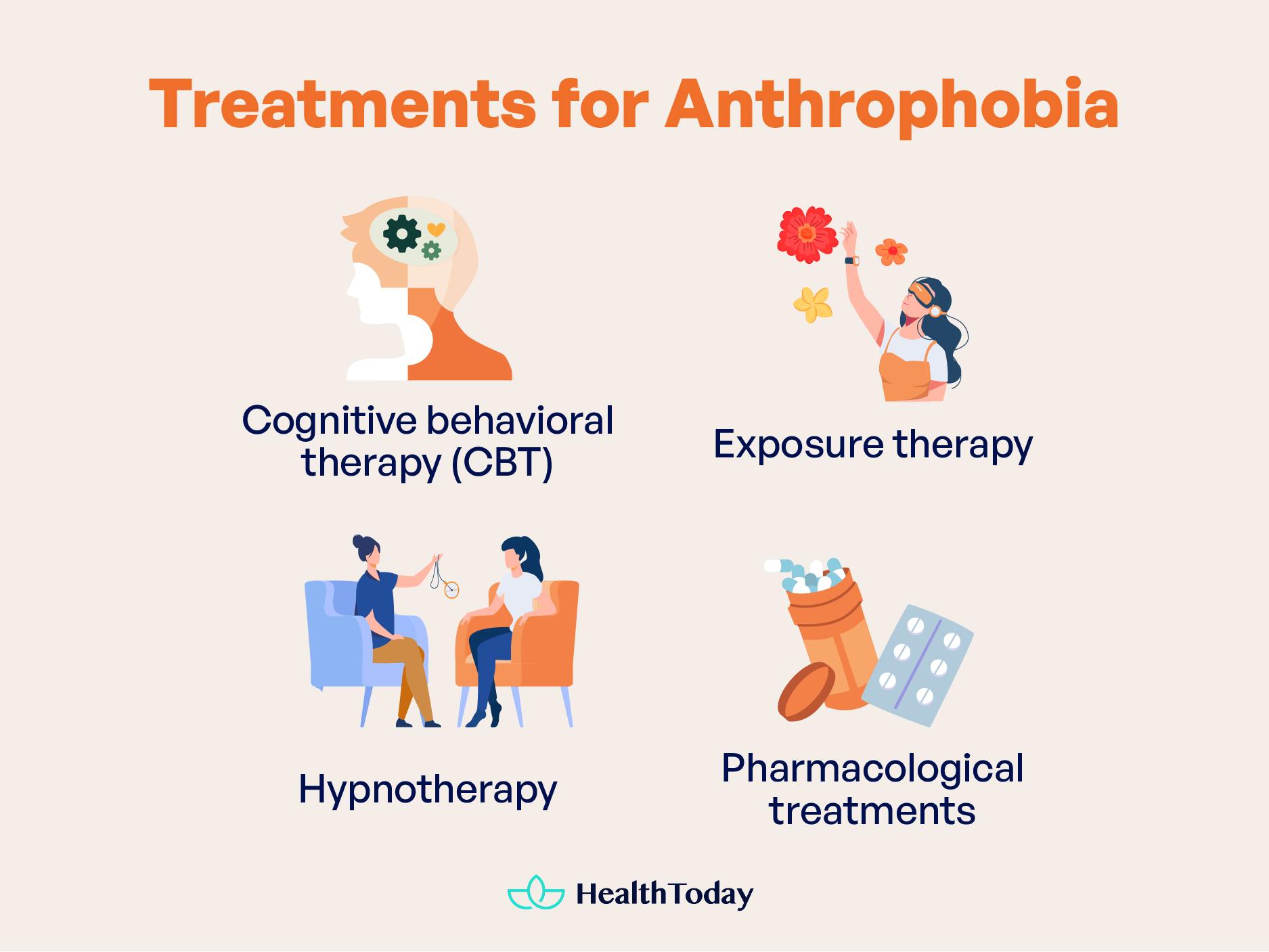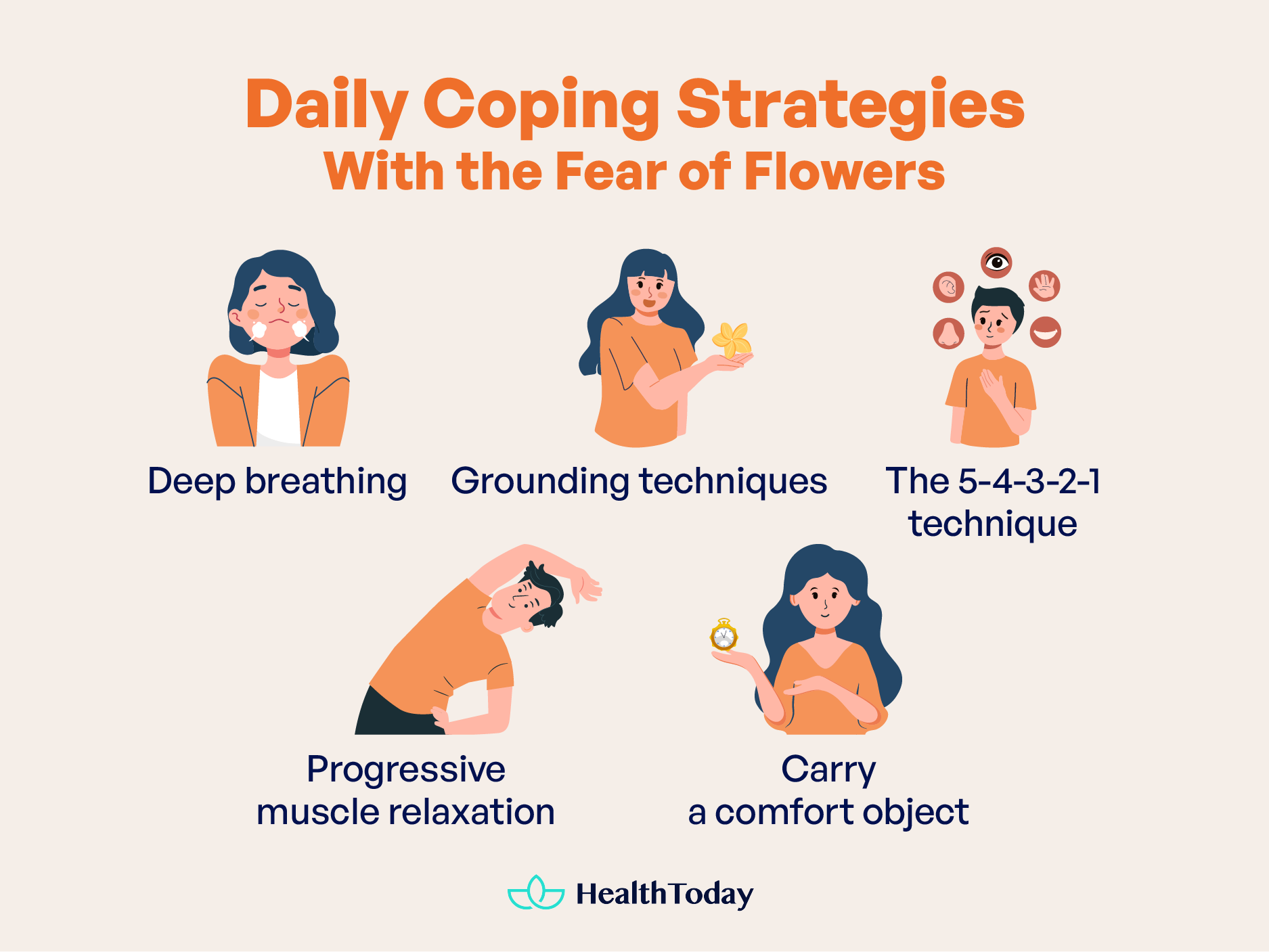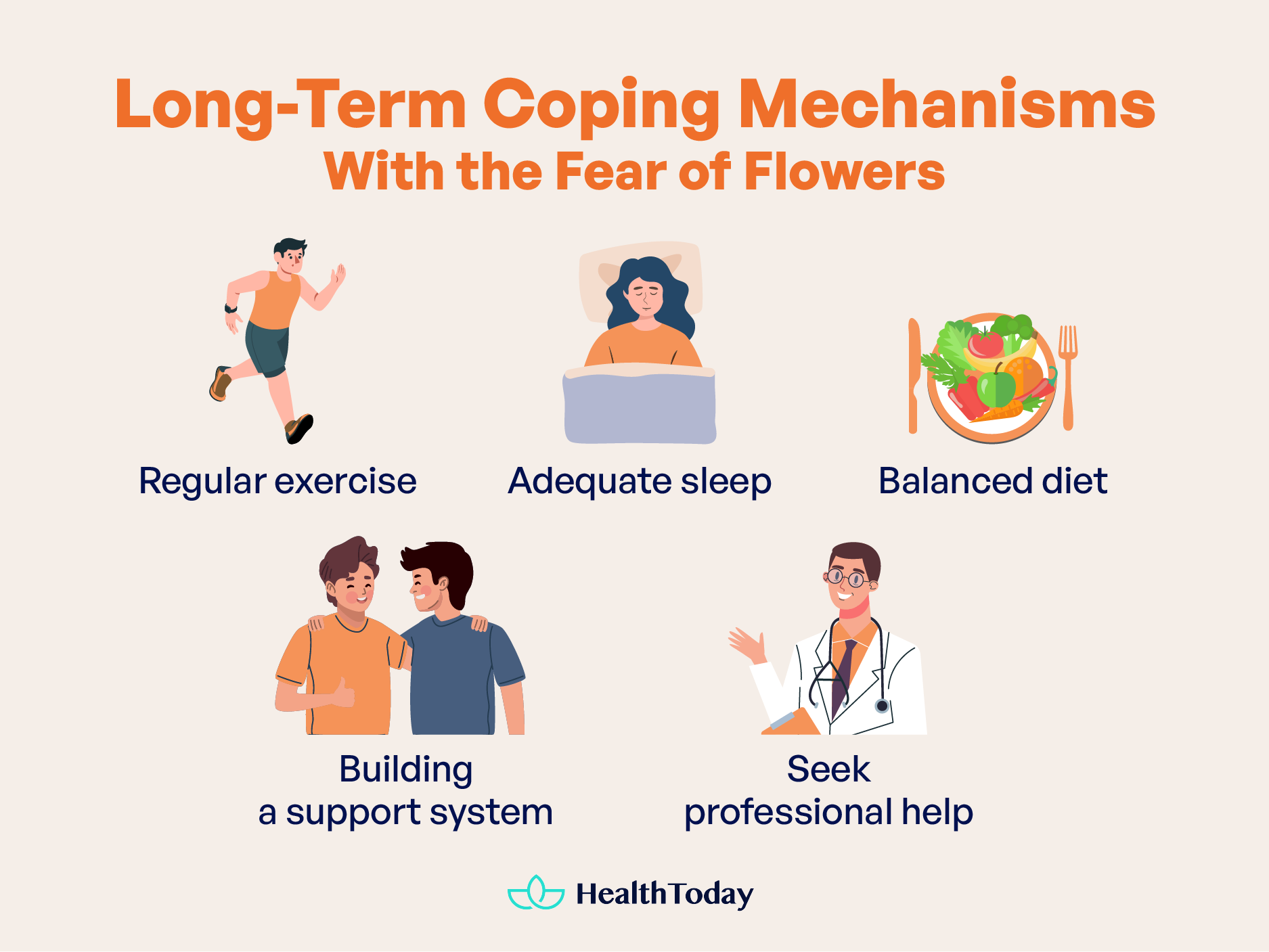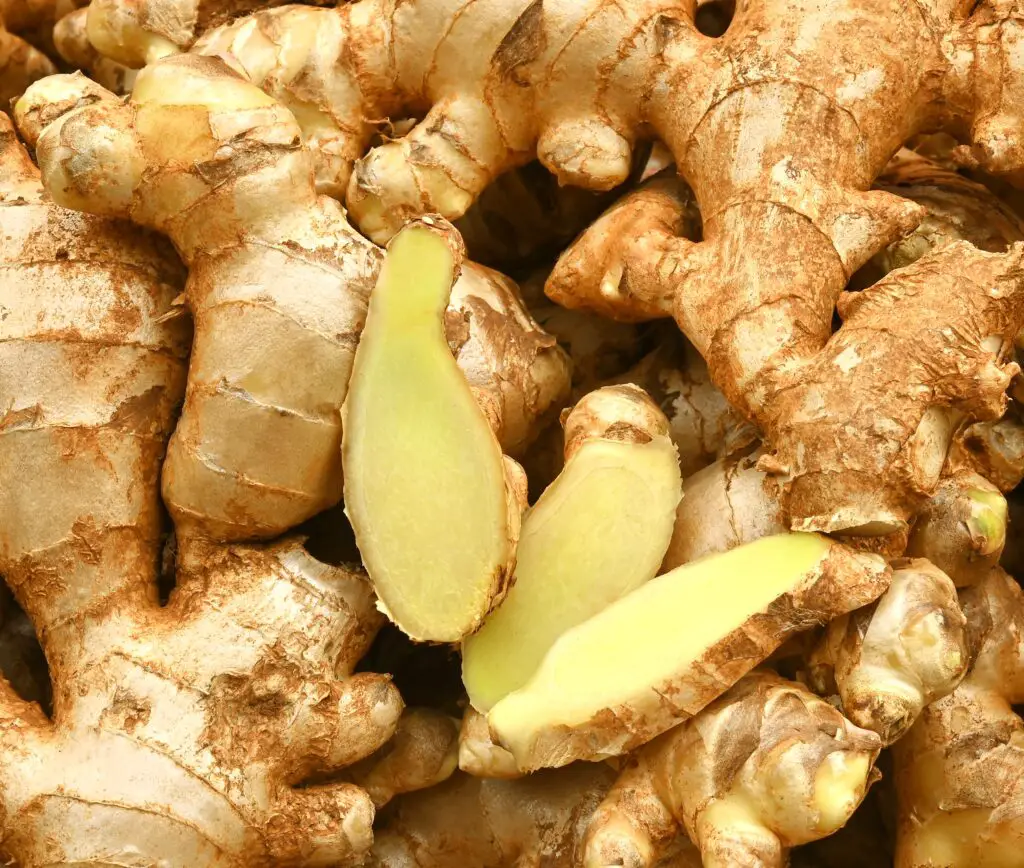Table of Contents
Imagine walking through a vibrant garden, but instead of feeling tranquil, you’re gripped with fear. Sounds unusual? This is the world of anthophobia, the phobia of flowers, a unique but real challenge some face daily.
We’ll explore its definition, prevalence, and the symptoms that can turn a beautiful garden into a place of anxiety. From uncovering potential causes to discussing related conditions, we journey through the landscapes of this unique phobia. Most importantly, we’ll arm you with practical strategies and treatments to reclaim the joy and serenity that nature intended. Whether you’re navigating this path yourself or supporting someone who is, this article is your companion through the thorny aspects of living with a phobia of flowers.
What is the phobia of flowers?
Anthophobia is a specific type of phobia, categorized under anxiety disorders, where the mere sight or thought of flowers triggers a deep-seated fear. This condition can vary from a fear of all flowers to an aversion to specific types or even particular parts like petals or stems (1).
Specific phobias are generally categorized into four major types: natural environments, animals, medical treatment, and situational. Anthophobia falls into the natural environment category, which includes fears related to natural surroundings. However, unlike other nature-related phobias, anthophobia is unique in its focus on flowers.
The term anthophobia comes from the Greek words “anthos” (flowers) and “phobos” (fear or deep aversion). This phobia is more than just a dislike or discomfort; it’s an overwhelming and irrational fear that can cause significant distress and impact daily functioning.
How common is it?
Phobias are more widespread than you think. Worldwide, the prevalence of specific phobias can range broadly, affecting anywhere from 3% to 15% of the population during their lifetimes (2). The most common culprits? Heights and animals. These phobias often take root in childhood and can persist well into adulthood, sometimes even lasting decades.
However, when it comes to anthophobia, pinning down exact numbers gets tricky. While specific phobias are indeed common, the exact number of anthophobia is a bit of a mystery. There is still not enough research on this specific type of phobia. However, this doesn’t diminish its impact on those who experience it.
Symptoms
This fear often intrudes into daily life, transforming otherwise enjoyable moments into sources of anxiety.
The body’s response to this fear can be intense and varied. Physical symptoms of phobias might be (1):
- racing heart
- sweaty palms
- Trembling or shaking
- rapid breathing
- GI distress
- dizziness
- nausea
Beyond the physical symptoms, anthophobia can also affect one’s overall functioning in their daily life. On a social level, anthophobia can lead to isolation, as individuals might avoid social events or gatherings where flowers might be present.
Furthermore, performance in school or work may be affected due to the distress of this phobia and avoidance tendencies.
If these symptoms persist for six months or more, it could indicate a more severe phobia or anxiety disorder. It’s crucial to recognize that these reactions are not just “in the head” but are real, physical, and emotional responses to a deep-seated fear.
When it comes to getting a formal diagnosis, there’s no blood test or X-ray for anthophobia. Instead, it’s all about having an open, honest conversation with a mental health professional. They use criteria from the DSM-5, a diagnostic manual, to assess symptoms, triggers, and the effects on daily life (1).
Possible causes
The exact cause of this phobia can be elusive, often intertwined with a person’s unique experiences, genetic blueprint, and environmental factors.
For many, the roots of anthophobia lie in past negative experiences. It could be something as simple yet unsettling as a bee sting while admiring a flower, leaving a lasting impression of fear. For others, it might be the painful association of flowers with funerals or loss, turning these natural beauties into symbols of grief and sorrow.
The development of specific phobias like anthophobia often starts in the tender years of childhood. Some research indicates they’re more prevalent among women, suggesting a possible genetic, temperament, or socialized predisposition (1).
Furthermore, coexisting mental disorders or anxieties, physical illnesses, or even severe seasonal allergies to flowers can all contribute to the development of this phobia.
Related conditions
Often, this fear of flowers doesn’t exist in isolation. It’s intertwined with other specific phobias, creating a complex web of anxiety.
Arachnophobia, the fear of spiders, is a common companion to anthophobia. Picture walking through a garden, where not only the flowers but also the sight of a spider weaving its web amongst the petals can send shivers down your spine.
Similarly, Entomophobia, the fear of insects, and Apiphobia, the fear of bees, often walk hand in hand with anthophobia.
Beyond these phobias, there’s also a connection with seasonal allergic reactions, commonly known as hay fever (3).
During certain times of the year, as nature bursts into bloom, those with hay fever experience various allergy symptoms, from sneezing to watery eyes. This physical discomfort can sometimes feed into the fear of flowers, causing physical reactions with psychological distress.
Treatments for anthrophobia
Overcoming a phobia can be a daunting task, but knowing the right treatments can make a difference. In this section, we’re going to dive into the world of treatments for anthophobia, each one a stepping stone toward your peace, from the transformative power of Cognitive Behavioral Therapy (CBT) and Exposure Therapy to Hypnotherapy.

Cognitive Behavioral Therapy (CBT)
Cognitive Behavioral Therapy (CBT) delves deep into the roots of your fear, challenging and reshaping the negative thoughts that give power to your anthophobia.
In CBT for anthophobia, your journey might begin with a thorough assessment to understand your fear of flowers. You’ll identify and challenge negative thoughts, transforming “flowers are terrifying” into “flowers are just a part of nature.”
The therapy includes behavioral experiments, like gradually facing flowers, to test and reinforce your new perspectives. You’ll also learn practical anxiety management skills like deep breathing or mindfulness.
Towards the end, you’ll review your progress, ensuring you have the tools to maintain your achievements and continue managing your fear effectively in the future.
Studies consistently show that CBT, whether used solo or paired with other treatments, can significantly reduce symptoms of specific phobias (4, 5).
Another study dives into the cerebral landscape, exploring how CBT reshapes the brain’s response to phobic stimuli. It found intriguing changes, especially in the precuneus, a brain region involved in self-awareness and memory (6). This suggests CBT does more than ease fear; it may rewire how we perceive and react to it.
Exposure therapy
Exposure therapy is a cornerstone of Cognitive Behavioral Therapy (CBT), particularly effective for phobias like anthophobia. It’s about gently introducing you to the object of your fear in a controlled, gradual way.
Over 90% of people with specific phobias find significant relief through exposure therapy (7). It’s a journey from viewing pictures of flowers to eventually, maybe, touching or smelling them. Each step is a carefully crafted experience to lessen fear and build confidence, guided by a professional.
In today’s digital age, Virtual Reality Exposure Therapy (VRET) is gaining ground. It offers a unique, immersive way to face fears in a safe, controlled environment. While VRET shows great promise, it’s essential to recognize that for some phobias, the traditional in vivo (real-life) exposure can be more impactful due to its direct, tangible nature (8, 9).
Hypnotherapy
Hypnotherapy is like a guided journey into the depths of the mind, where the roots of the fears and anxieties are hidden. It’s not about losing control but gaining deeper insight into your subconscious thoughts, beliefs, and memories.
This kind of therapy begins with you being guided into a deeply relaxed state by your therapist’s soothing voice, opening the door to your subconscious mind. In this tranquil state, your mind becomes more receptive to positive suggestions, allowing your therapist to offer new perspectives on your fears and potentially rewire your response.
This therapeutic journey can involve exploring buried emotions or learning new coping mechanisms, planting seeds of positive thoughts in your mind.
While hypnotherapy can be a powerful tool for issues like stress and certain habits, it’s not a universal solution. Studies show mixed results, especially for anxiety-related conditions like phobias. It’s crucial to have realistic expectations and to work with a qualified hypnotherapist (10, 11).
Pharmacological Treatments
Pharmacological treatments can play a supportive role, especially in managing the symptoms of anxiety and fear. These medications aren’t a cure-all but can help make the challenges of phobias more manageable.
Propranolol, a beta-blocker, is primarily used for heart conditions but can also ease the physical symptoms of anxiety, like a rapid heartbeat, which often accompany phobias (12).
However, medication should be seen as one part of a holistic treatment approach, often combined with therapy methods like Cognitive-Behavioral Therapy (CBT) or exposure therapy. While medications can alleviate symptoms, therapy is key in addressing the underlying causes of the phobia.
How to cope with the fear of flowers? Tips may help
Now you’ve got the insights on the treatments, but what happens when you’re alone, and suddenly your fears crash your day?
Don’t worry; we’re about to dive into the tool sets of practical, on-the-spot strategies to help you navigate these unexpected waves of anxiety.
Plus, we’ll explore some long-term tactics to not just live with your phobia but to thrive despite it.

Daily Coping Strategies
Coping with phobias daily can be challenging, but having certain coping techniques can allow you to manage your phobia with more confidence and ease.
- Deep breathing: When fear surges, our breath tends to get shallow. By deliberately slowing down your breathing, you can signal your body to relax (13). The 4-7-8 technique is a great tool here: breathe in for 4 seconds, hold that breath for 7 seconds, and then exhale slowly for 8 seconds. This rhythmic breathing can be a lifeline during anxious moments (14).
- Grounding techniques: Imagine your fear as a wave and grounding techniques as your surfboard. They help you ride out the wave by bringing your focus back to the present.
- A popular method is the 5-4-3-2-1 technique: identify five things you can see, four you can touch, three you can hear, two you can smell, and one you can taste.
- Progressive muscle relaxation: Stress and fear often lead us to tense up physically. Progressive muscle relaxation is like a systematic unwinding of this tension. Start at your toes and work your way up, tensing and then relaxing each muscle group. It’s like giving your body a permission slip to relax.
- Carry a comfort object: Sometimes, just having something to focus on can be immensely comforting. Whether it’s a stress ball, a smooth stone, or any small item that calms you, keep it on hand.
Long-term Coping Mechanisms
While these strategies above are helpful, long-term habits and support are what foster mental resilience and growth.

Here’s how you can create a sustainable environment for your mental health to flourish:
- Regular exercise: Just like physical workouts build muscle strength, regular exercise fortifies your mental resilience. It’s a natural stress-buster, releasing endorphins, which are your brain’s feel-good neurotransmitters (15, 16). Whether it’s a brisk walk, yoga, or a dance class, find an activity that gets you moving and lifts your spirits.
- Adequate sleep: Sleep is the cornerstone of mental health. It’s when your brain sorts the day’s experiences, recharges, and resets. Lack of sleep can amplify anxiety in both the body and mind, making it harder to manage fears (17).
- Balanced diet: What you eat has a profound impact on how you feel. A diet that’s high in caffeine and sugar can send your anxiety levels soaring. A balanced diet that is rich in fruits, colorful vegetables, lean proteins, and whole grains keeps the engine running smoothly (19). Healthy anti-inflammatory fats are also recommended as they provide a soothing effect on the nervous system. What’s more, is that consuming foods that are rich in pre and probiotics support gut functioning– helping the body and mind to function at their best.
- Building a support system: You don’t have to walk this path alone. Opening up to friends or family members about your fears can create a network of support. Consider joining a support group too, where you can connect with others who share similar experiences. There’s immense power in understanding that you’re not alone in your struggles.
- Seek professional help: Remember, self-help strategies are just one part of the puzzle. For long-term management and a deeper understanding of your phobia, professional help is vital. A health professional who specializes in phobias can be your guide through this transformative process.
How rare is anthophobia?
Anthophobia is quite a rare condition. It’s not one of those phobias you hear about daily, like the fear of heights or spiders. It’s so uncommon that exact prevalence rates are hard to pin down.
What is the #1 rarest phobia?
It’s not likely to name the single rarest phobia – too much competition. However, some exceptionally unusual ones include Ablutophobia, the fear of bathing, and Arachibutyrophobia, the fear of peanut butter sticking to the roof of your mouth. Yes, you read that right.
Are phobias always unhealthy?
Not all phobias are bad. In mild forms, they can be harmless, even rational – like being a bit scared of poisonous snakes. It’s when fear turns into a horror movie, disrupting your daily routine or causing significant distress, that it becomes a problem.
What fears are we born with?
Babies don’t come with a manual, but they do arrive with a couple of built-in fears: loud noises and falling. These are like the default settings in our survival software, likely hardwired into our brains over the course of human evolution. Everything else – like fearing spiders, clowns, or that email from your boss – is acquired through our experiences.
Summary
We’ve journeyed together through the less-traveled paths of anthophobia, the phobia of flowers, unpacking its mysteries and exploring its hidden corners.
From understanding its nature, prevalence, and symptoms to delving into the reasons it takes root in our minds, we’ve navigated the complexities of this unique phobia.
We’ve also uncovered a bouquet of treatments and coping strategies, and most importantly, we’ve equipped you with daily and long-term tactics to manage and thrive despite this fear. Remember, whether you’re facing anthophobia head-on or supporting someone who is, you’re not alone.
We hope this guide serves as a beacon of hope and a testament to the power of understanding and targeted action in overcoming the fear of flowers.

















Comments
0